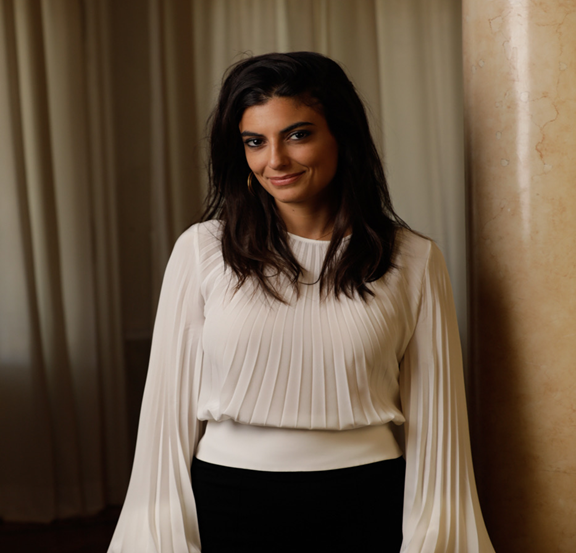Tasneem G, Indian Artist Redefines Middle Eastern Patterns What is art in the sense of Islamic tradition?

With her retro glasses slapped on, and the opening of a new, fresh fine-point pen in her hand, the silence of her 4-year old musk-scented dorm room began to fill within her. Lino cutters, old worn-out paint brushes, glues from her first year project and the mesh from her old sculpture work lay in front of her.
Searching for her elements that acquire who she has become as an artist, Tasneem Gangardiwala opens her thick, black, untouched sketchbook of 6 months and begins to draw a pattern that she never thought she would have seen in her first finale exhibition.
She sat up in the night and drew out the smallest of illustrations that were once a facade of her imagination. The thin lines drawn and the intricate details of her patterns begin to represent the subconscious of those thoughts, bringing the 8-hour drawing session as the awakening of her final submission.
Two months in her final semester, Tasneem found her Arabesque patterns becoming the elements of her work, defining and incorporating the western and oriental philosophies of today.
“Motif Memorabilia” she said. With a nod, I wait for her to continue, while I watch her take off her glasses and adjust her Indian oriental paisley-patterned shawl defined with buta art, tear-drop shaped reoccurring patterns, she describes her artistic work as the definition of objects that were collected and aligned with the association of memorable patterns in the Arab history.
Gangardiwala, her family name of route-based culture, defined by the Bohri as the family of the farming land, Gangardi, implies the definition of the traditions embedded within her. “As an artist my role is to open up the doors of history and bring out the intricate details of arts and the power of its elements to the islamic tradition.” She is portraying and setting no limits to her work, which provides thought-provoking pieces that aim to depict the social Arab landscape.
Cross-legged, fidgeting in her chair, Tasneem asks to finish our conversation outside on a bench that was filled with memories of her previous 4 years at the American University in Dubai.
As she sips on cold water from the bottles of many she has taken from friends, she takes a large gulp and begins to describe the power of art. “Free reign and an endless field for exploration,” as I turn through my questions placed on my laptop, Tasneem interrupts and explains, “Having the extraordinary opportunity of being an Indian who resides within the international communities of Oman and Dubai has helped me understand and integrate creative and cultural identities of the respective countries in my artwork.”
The elements of compassion, sensitivity and empathy towards the region and the combination of thirty canvases sized 30 x 20 cm in black, with thick white ball marker pens painted out in an achromatic color scheme is her attempt to show the Islamic trajectory using patterns from the six most prominent Arab empires.
More than anything Tasneem wants the power of the visual to portray the kind of silence that deserves an explanation. “I want to portray the elements of these empires and provide the beauty within them as the definition of the Islamic culture.”
Click on the video below to check-out some of Tasneem’s work:



